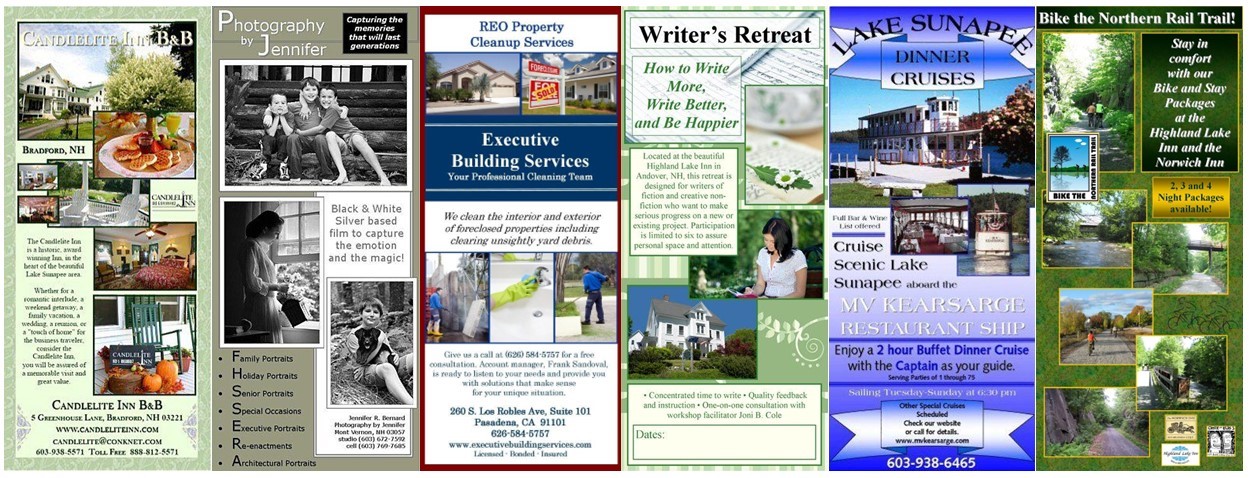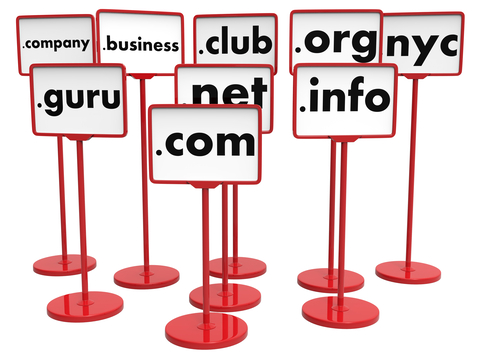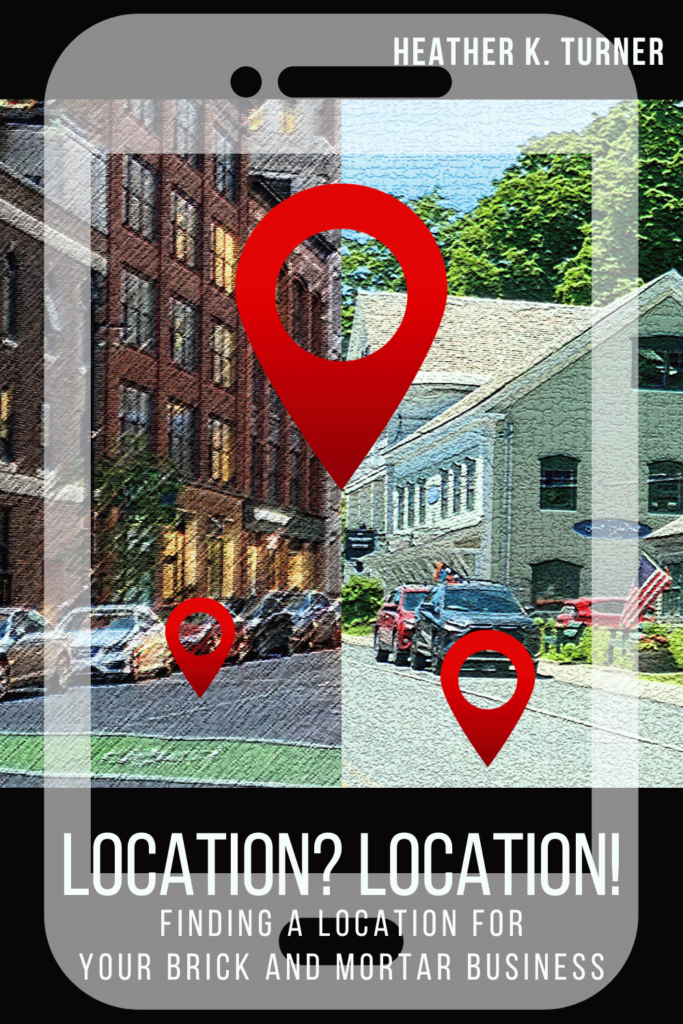by Heather T. | Feb 7, 2024 | Business, Observations, restaurants
 There are three main types of people who want to open a restaurant.
There are three main types of people who want to open a restaurant.
Those who have been in the industry, usually chefs and cooks (but not always, sometimes it’s front of the house people), those who grew up in a restaurant environment, (i.e. parents or other family members owned or ran a restaurant), and the folks who have fallen in love with the “idea” of owning their own restaurant.
All of them have, and can run and own a successful restaurant, but I have found in 40 years of working in and with the hospitality restaurant that’s it the first two types that have better success and better success long term with running a restaurant.
I’ll be blunt and I am really not trying to talk people out of owning a restaurant, but to be realistic about what someone is getting into if they have never worked in a commercial food service establishment before.
For fans of, “The Bear” TV series while it has many realistic parts to it for at least the back of the house, apart from some glaring errors, (pretty much everyone in the industry knows what ServSafe is, whether or not your state requires it). IMO It’s still not a great representation of actually “owning” a restaurant and ALL that it entails. I think it hits the marks pretty high on the stress, the dynamics and many other things that happen in real life in a kitchen though and it’s worth a watch if you want to open a restaurant and not had ANY prior experience. But it still doesn’t cover many of the realities of the actual operations of a real restaurant, front of the house, back of the house, the day-to-day operations, the financials and the struggles with financials on a constant basis, checking in orders, employee theft, doing inventory on a frequent basis, dealing with difficult customers both online and off literally every day, dealing with vendors, scheduling staff, dealing with seasonal or economic slowdowns, the marketing online and offline, etc. etc. etc……………
While there have been some terrific food movies out there, mainly from the kitchen perspective, I have yet to see a restaurant movie that really truly reflects REAL life running a restaurant and I suspect it’s because no one “really” wants to see what’s behind the scenes on a real day-to-day basis.
It’s scary how much work, how much stress, and how much slog an owner has to get through daily, especially if they are a hands-on owner. Many chefs who become chef owners spend more time managing and dealing with day-to-day problems than cooking and I had several jobs before I got out of the business where I spent more time pushing paper than behind the line. Not fun, take my word for it. My passion is food and while I love excel spreadsheets, I got into the food business because I loved to cook, not because I wanted to become an accountant.
My first book is coming out shortly (Finding a Location for Your Restaurant) and with that I created a series of real life or lets call them, “lets get a reality check”, quizzes, so that people thinking about owning and operating a restaurant (regardless of whether they have experience in a restaurant industry or not) can get an idea of what they know, they need to know and what they WILL run into as an owner or lessee of a restaurant property.
I want to thank several hundred of my friends (both from the industry and from many other walks of life in other industries) for being guinea pigs to test these and get a baseline for the scoring.
Again, these quizzes are not meant to discourage people from wanting to run their own restaurant, but rather to provide some insight into the reality of it and many of the things that you, as an owner, WILL encounter.
I mention this in my book, but it bears mentioning here. Back in the mid 1990’s I considered buying and running a restaurant and in hindsight, I am so very, very, VERY glad I did not. It would have failed in under a year. With all that I know now, I look back at that person, who had a lot of cooking experience and some management experience and I can snark at myself honestly and say, “oh you foolish, foolish child”. because I had no clue at all about what running and owning a restaurant and doing it successfully really entailed.
Interested in trying the quizzes out?
by Heather T. | Jan 9, 2024 | Food, Observations, Operations, restaurants
 I had a meeting with a client recently, and a big part of our conversation was about hiring for a restaurant.
I had a meeting with a client recently, and a big part of our conversation was about hiring for a restaurant.
I had to dig out my notes to send them but realized I don’t think I’ve ever put these questions out on the blog that I have used in the past as part of working in restaurants in management and for the last twenty years in consulting, where I’ve helped interview candidates for positions.
While none of these questions are rocket science, and there are multiple websites out there offering lists of 10-20 questions, there are some questions on here that I’ve never seen listed by some hiring sites that have “suggested questions.”
It seems that many of the sites had people writing these questions more from a HR perspective, and not from an actual restaurant management perspective, or experience dealing with some of the realities that working in restaurants engenders.
So, if you find a few you have yet to come across, I hope it’s helpful.
The one additional thing I’ve found in calling references is to call suggested references but also call any past positions not given but listed on the job seeker’s resume (and to Google their name in quotes as well for any positions worked that they may not have listed, so (“John Doe” Chef, Kingston, NH) for example.
The one question I always ask of references and non-references is, “Would you hire them back?” if the reply is “Probably not, or no,” that can be a red flag. And in a lot of cases, that’s all you need to know.
I always recommend checking your state’s labor laws to find out what questions you can also legally ask past employers.
Doing a tag team interview (two interviewers) can also help: one person takes notes, and the other asks the questions. People’s body language and facial expressions can be enlightening when answering questions, but if it’s just you asking, you might miss those if your head is bent writing notes.
If you are interviewing multiple candidates, ask to record the interview with their permission because then you can go back and review exactly what was said. I’ve interviewed dozens of people for the same position, and sometimes, interviews get blurred together, and it’s challenging to make a final decision based on memory alone.
Two questions I ask both potential working chefs and GMs (that might be kitchen managers or GMs that are in charge of the whole restaurant or food service facility) is:
What can you tell me about this business? If they didn’t do their homework first regardless of the position hiring for) make it a short interview unless they strike you as a really good candidate. Anyone worth their salt though will at least look at the website, the really good ones will dig around online.
Is there anything that you see that you think could be changed or adjusted? (related to the first question).
Interview questions for working chefs and general managers:
What can you tell me about this business? (if they didn’t do their homework first regardless of the position hiring for) make it a short interview unless they strike you as a really good candidate. Anyone worth their salt though will at least look at the website, the really good ones will dig around online)
Is there anything that you see that you think could be changed or adjusted? (related to the first question).
Some of the questions are somewhat duplicated but asked in different ways. I always liked to throw some repeat questions in that are reworded as sometimes people change their answers. If a chef position is also a head chef or executive chef position, many of the questions asked of a General Manager would also apply.
Working Chef Questions:
- What are your salary expectations and benefits you’re seeking?
- Do you have any questions about the position or our restaurant?
- What specific skills and experience do you bring to our restaurant’s concept and clientele, and how do you align with our values and customer base?
- What inspired you to become a chef? Or cook?
- Describe your culinary journey, including your experience with specific cuisines, cooking styles, or restaurant types?
- How do you handle and adapt to changing food trends and dietary preferences, such as plant-based, gluten-free, or keto diets?
- How do you ensure food quality and consistency in a high-volume environment?
- Can you provide examples of conflicts or challenges you’ve faced in the kitchen and how you resolved them?
- Can you provide examples of conflicts or challenges you’ve faced managing menus, special events, and high-pressure situations?
- What is your approach to sustainability, locally sourced ingredients, and menu creation?
- What is your approach to balancing creativity with customer preferences and cost-effectiveness?
- How do you approach training and developing kitchen staff?
- What are your long-term career goals in the culinary industry?
- Can you share an example of a dish or menu item you created that was particularly well-received?
- Have you done food and wine pairings or food and other types of pairings? Please describe?
- Describe your leadership style and how you foster a positive and collaborative work environment.
- What are your expectations for staff in terms of performance and conduct?
- What are your proudest accomplishments as a chef?
- What drives your passion for cooking?
- What is your vision for the future of your culinary career?
- Who are your biggest culinary influences or role model?
- Are there any specific cuisines or dishes that have impacted your cooking style?
- What challenges have you faced as a chef?
- What are your future goals or aspirations?
- How do you stay up-to-date with industry trends?
- How do you balance your personal and professional life?
- What is your experience in managing a kitchen?
- What is your experience in maintaining food safety standards?
- How do you motivate and lead your kitchen staff?
- How do you handle equipment maintenance and unexpected changes in the kitchen that might impact service and quality?
- How do you encourage ongoing skill development among your kitchen team?
- What are your career goals?
- How do you balance the demands of the job with your personal life?
- How do you handle conflicts between staff?
- How do you effectively train new staff on kitchen procedures?
- What methods do you use to maintain organization in inventory and kitchen operations?
- What methods do you use to create staff schedules?
- What methods do you use to ensure safety and cleanliness in the kitchen and with your staff?
- What is your culinary philosophy or approach to cooking, and how do you stay on top of current food trends?
- What experience do you have with menu development and pricing dishes profitably?
- How do you cost out a menu?
- How do you cost out a recipe?
- How do you mentor any staff that doesn’t have as much experience as you do?
- How do you identify and source high-quality ingredients?
- How do you balance purchasing high-quality ingredients with cost effective purchasing?
- Tell me about your experience accommodating special diets, such as vegan and gluten-free ones,
- Tell me about your experience keeping your team motivated during both busy and slow shifts.
- It’s a slow day, what do you and your staff do?
- Are you currently ServSafe® certified? Which certification?
- Are you familiar with food costing software? If so, which one or ones?
- What Point of Sale software are you experienced with?
- Have you ever had a customer return a dish, and how did you handle this situation?
- How do you balance preparing perfect dishes with sending food out on time?
- Have you ever done inventories prior? Please describe the method and how often you were involved in doing them.
- Have you ever purchased from broadline and specialty vendors? Who and what did you purchase?
- Do you think it makes sense to purchase everything from one vendor? Or to price compare products?
- How many vendors have you dealt with prior at a time?
- Have you ever negotiated prices with vendors?
- Have you ever had to deal with a vendor that tossed product (meaning they would charge for a flat of produce and had taken out some product, turned the flat over gently and then again to make it look full) or a vendor that didn’t properly deduct tare weight from product deliveries?
- If you dealt with the above, how do you deal with the vendor?
- Have you ever run into a situation(s) where you couldn’t afford to make the minimum order for a food delivery and you desperately needed goods? What did you do?
- Have you ever run into a situation(s) where the restaurant couldn’t afford to pay vendor invoices and bills and your vendors cut you off from deliveries until past due invoices were settled? What did you do?
- How long have you been managing others?
- How many staff have you been in charge of prior and what positions?
- How long have you been managing others?
- What was your favorite place to work prior and why?
- Are you prepared to be on call if a line cook or dishwasher doesn’t show up for a shift?
Interview Questions for General Managers:
- What are your salary expectations and benefits you’re seeking? Do you have any questions about the position or our restaurant?
- As a general manager in charge of the entire restaurant, how do you reduce operational costs?
- As a general manager in charge of the entire restaurant handle disciplinary actions with staff?
- Have you ever had to discipline staff members? For what and tell us about a couple of situations.
- Have you ever had to fire someone? If so, how many people, tell me about the experience?
- Have you ever had to hire people? If so, for what positions, tell me about how you approach hiring?
- Can you describe your experience with managing difficult situations, including a specific example, and how you resolved conflicts involving both front and back of house staff?
- Can you describe your experience with managing difficult situations, including a specific example, and how you resolved conflicts involving a staff member and customer?
- Can you describe your experience with managing difficult situations, including a specific example, and how you resolved conflicts involving yourself and a customer?
- Can you describe your experience with managing difficult situations, including a specific example, and how you resolved conflicts involving yourself and a staff member?
- Can you describe your experience with managing difficult situations, including a specific example, and how you resolved conflicts involving yourself and an owner or manager above you?
- What Point of Sale software are you experienced with?
- Are you familiar with food costing? If so, please detail.
- Are you familiar with food inventories? If so, please detail.
- Are you familiar with setting menu pricing? If so, please detail.
- Have you taken a ServSafe® course, and are you currently certified? Which certification(s)?
- Have you ever taken TIPS® training and are you currently certified? (Important if you have a bar or alcohol service)
- Have you ever taken ServSafe Alcohol® and are you currently certified? (Important if you have a bar or alcohol service)
- Are you prepared to be on call and fill in if someone from the back of the house or the front of the house calls in sick or pulls a noshow?
- How do you give feedback to employees?
- Do you become “friends” with employees or do you keep a distance personally?
- What is your skill level with MS Office? If so, please detail what programs within MS office. .
- How do you ensure seamless coordination between the front and back of the house to deliver a high-quality dining experience?
- Give me some strategies for maintaining food quality and presentation?
- Give me some strategies for adapting to changing food trends?
- What measures do you take to adhere to health and safety regulations in both the kitchen and dining areas?
- Can you describe your experience with creating and managing budgets?
- Can you describe your experience with maximizing profitability for both the front and back of the house?
- Have you ever had to deal with employee theft?
- If you have had to deal with employee theft, what did you do?
- Have you ever had to deal with an issue of sexual harassment in the workplace with your employees?
- If you have had to deal with of sexual harassment in the workplace, what did you do?
- Have you done employee scheduling prior? For what daypart (breakfast, lunch, dinner, other) and for how many staff?
- Describe the most difficult scheduling problem you have faced as a manager?
- How do you approach training, developing, and managing staff to maintain high standards of service?
- How do you approach training, developing, and managing staff to maintain high standards for food preparation?
- What steps do you take to address customer complaints involving both food quality and service issues? Give some examples of how you would deal with complaints.
- How do you manage your time effectively to oversee all aspects of restaurant operations?
- What are your long-term goals for improving the restaurant’s performance and success?
- What do you think, in your own words, are your key responsibilities as a GM, including balancing time between overseeing the dining room and the kitchen, and what operational systems would you use to facilitate this?
- How do you plan on onboarding and training new hires?
- How do you plan to manage inventory, and use that data for operational decisions?
- Can you share strategies for effective staff communication, delegation, and handling issues like understaffing or team conflicts?
- Describe your leadership style and philosophy?
- How do you cultivate a strong service culture and manage the demands of the job while maintaining work-life balance?
- Are you familiar with the legal aspects of running a restaurant, such as liquor licenses (if applicable) and labor laws?
- Can you share your experience with restaurant marketing, promotions, and responding to online reviews and public feedback?
- How involved have you been in menu planning and development?
- Describe a strategy you’ve implemented for boosting staff morale and reducing turnover. (and after they give an example) ask them to explain how well it worked and what happened.
- Describe a strategy you’ve implemented to ensure high standards of customer service. (And after they give an example.) Ask them to explain how well it worked and what happened.
- Can you give an example of how you’ve successfully managed a diverse team and describe your journey in the restaurant industry leading up to a general management role?
- How do you balance the needs and priorities of both front-of-house and back-of-house staff?
- What are your strategies for attracting and retaining customers?
- What do you think is most important when dealing with customers?
- What motivates you and what do you find most rewarding about running a restaurant?
- What are your strengths, weaknesses, and career aspirations in the restaurant industry?
- Is there anything else you would like to share about yourself or your experience that might be relevant to this position?
- What is your strongest qualification for this job?
- Tell me of at least two reasons this job is a good match for your skills, strengths, experience and background?
- Give me an example that best describes your organizational skills.
- If offered the position how long do you plan to stay at the establishment?
- What new skills have you learned or developed recently?
- What kind of personality do you work best with and why? And what kind have you had any problems with working with in the past?
- What irritates you about other people?
- What do you think you like and dislike about the job we are discussing?
- Where do you see yourself in five years?
- What attracted you to this position?
by Heather T. | Nov 30, 2023 | Business, Observations, Operations, restaurants
 I’m pretty excited. I’ve been working on a how-to book series, and my first book will be released at the end of December!
I’m pretty excited. I’ve been working on a how-to book series, and my first book will be released at the end of December!
Future ones will all be restaurant-oriented and will cover: writing a business plan, writing a marketing plan, how to do competition research, dining and kitchen flow, writing an operations plan, menu development, dealing with difficult customers both online and offline, reputation management, the art of the upsell, managing and dealing with employee theft and managing and keeping your employees.
My first book, Finding a Location for Your Restaurant will cover:
- Community Assessments
- Who Is Your Market?
- Competition
- Parking including Limited Parking, Shared Parking, Street Parking, Motorcycle and ADA Parking, Parking Fees, Employee Parking and Delivery and Pickup Parking
- Lot and Road Conditions
- Flooding and Flood Zones and Other Natural Disasters
- Foot Traffic
- Traffic Counts
- Vendor Access and Who Delivers?
- Noise Considerations
- Crime and Safety
- Catering In-House or Off-site Considerations
- Landscaping
- Zoning
- Outdoor Dining
- Signage
- Taxes and Tax Assessment History
- Business Turnover
- Employee Housing
- In-person Research
Most of the how-to books I’ve come across on opening a restaurant don’t go into depth about everything you should be really looking at when you assess a restaurant location.
I’m also almost finished with a quiz with scoring that I think will help guide people who want to open a restaurant. Inspired by Steve Strauss’ Entrepreneurship Readiness Quiz, which we use in SCORE (with Steve’s permission), I am working on a “Do you REALLY think you are ready to own your own restaurant?” Instead of 20 questions, it is going on about 100 questions+ so that someone, whether they have had restaurant experience or not, can drill down on not just whether they are ready or not but if they do want to start the business; this is where they will find the holes and knowledge that they either lacking and need to learn about or make sure they hire key people with those skill sets.
by Heather T. | Nov 8, 2023 | Food, Marketing, Observations, Operations, restaurants

A recent inquiry from an individual interested in gaining insights into my approach during restaurant audits inspired this post. While I can’t disclose specific client information due to confidentiality, I can give some examples of things I typically assess when evaluating a restaurant or other hospitality establishment.
It’s important to clarify that this pertains to my private business clients, not those from SCORE mentoring.
Whenever my husband and I dine out or when I’m out with friends or business associates, I tend to analyze various elements of the dining experience, including visuals, menu offerings and design, food quality, food presentation and service. It’s hard for me to turn off the evaluation gerbil wheel in my brain. But at least I’m easy to get along with while dining out because the food has to be really, really bad for me to complain.
I gave some examples of a recent dining experience my husband and I had, highlighting aspects I would typically take note of during a restaurant audit and thought I’d put them into print.
Please note that this covers only the front-of-house visual aspects and doesn’t come close to a comprehensive audit, which includes over 200 touchpoints or the examination of kitchen operations and food quality.
I always encourage owners and managers to “be” a customer and evaluate the space as often as possible. Sit at an empty table for a little while during service or at the end of the bar and just observe.
If you’re paying attention, you can always find room for improvement.
Here are a few things that we noted while dining that could use some TLC to enhance better guest/customer satisfaction, check averages, and tip averages.
Enhanced Specials Promotion:
As we entered the restaurant, we noticed a low-standing sandwich board with the day’s specials. Unfortunately, it wasn’t eye-catching for walk-in customers, and while we visually saw it on entering, we didn’t stop to read it, assuming that the specials would be repeated in some way when we sat down.
Our server and the server who came to take a neighboring tables order didn’t mention the specials without us specifically asking. The specials weren’t visibly posted inside or available in printed form. When we inquired, our server directed us to the board outside. In this scenario, the restaurant missed an opportunity to effectively promote its specials, and the server missed a chance to increase her tip by just verbalizing the specials instead of asking us to get up and walk halfway through the restaurant and around the corner to view them.
Seating Comfort Assessment:
An uncomfortably cold draft from a floor vent under our chair caught our attention. This is why I recommend that owners and managers sit in every seat within the restaurant in all seasons. They should evaluate whether the air conditioning or heating causes discomfort, whether drafts exist, and whether the music volume is excessive in certain areas. Adequate lighting for reading menus is also a key consideration.
Convenience in Restrooms:
Restrooms should have hooks and/or a small table in all-gender bathrooms for patrons to hang their bags or coats. Placing personal items on the floor is often considered unhygienic; in this instance, there was no space on the toilet tank or the narrow sink.
During colder months, having a place to hang coats is particularly appreciated. People may be entering the restrooms while waiting for a table and before they sit down (and may still have their coats on) or after paying the check and preparing to leave.
Safety Concerns in the Kitchen:
It’s important not to have glass drinking glasses in the kitchen on the line. Several times, we observed servers passing glasses of soda directly to line cooks through the pass-through window, and we could see them placed on the line right above the stove area. This practice can lead to accidents, such as glass breaking and falling into food. Proper safety protocols are essential, i.e., using plastic vs glass.
Discreet Refilling:
Refilling ketchup bottles from a #10 can in the dining area can be unappetizing to customers. Although ketchup has a long shelf life, it’s best not to expose the refilling process to patrons. Moreover, maintaining cleanliness and sanitization is crucial for the condiment containers. While many restaurants do this and ketchup has a very long shelf life, A. I don’t want to see it as a customer; I noticed because I notice these things, but most customers do notice and it sticks in their subconscious as an “ewwww” factor. B. I’d question when the last time these refilled bottles were cleaned out totally and sanitized. Our bottle was about ½ full, and my husband’s ketchup and my ketchup from the same bottle were two different colors of red.
Effective Upselling:
Our server missed opportunities for upselling both drinks and desserts. No ask to see if we would like coffee or dessert, just an ask if we wanted the check. Encouraging customers to explore the bar menu or offering dessert options at the end of the meal can significantly increase overall sales and enhance the dining experience.
Adequate Space Between Tables and Chairs:
While maximizing seating capacity is important for revenue, it’s equally crucial to ensure customer comfort and ease of movement. Waitstaff should have ample space to take orders, serve food and drinks, and clear tables without inconveniencing customers.
(If you were wondering about the above photo, this is a perfect example from the restaurant in question; how much room would there be if someone was sitting in the other seat? There is already not enough room to walk between chairs without bumping into the bag).
When laying out a dining room and estimating space, chairs should not pushed into the table but should be pulled out enough as if someone was sitting in each seat, plus some extra space for handbags or backpacks and coats to hang in the winter (especially if there is no coat rack, as in this case).
There is nothing worse for a customer than having to ask people not to just move their “stuff” but to actually have to get up so someone could get out to use the restrooms or to leave.
It’s even worse if you have waitstaff juggling hot food or a tray of drinks. If your dining room layout reminds you at all of a full flight in an airplane with tiny seats, cramped space, etc., you really need to rethink your layout. What you may sacrifice in a seat or two, you will make up in spades from happy waitstaff and repeat customers.
As an owner or manager of a restaurant, most improvements can be gleaned just by taking the time to observe and to ask your staff for suggestions and improvements.
A consult I did a few years ago where we asked the staff for suggestions (and this had never been done before there) resulted in many ideas that saved the owner money, and made the working environment easier to use through flow suggestions and more productive for staff because suggestions were implemented, and staff appreciated the fact that they were listened to.
These observations are not meant to be critical but rather constructive to pinpoint areas where improvement can enhance the return on investment (ROI) and the return on the total investment (ROTI). ROTI can also be Return on Time Investment, which also applies in this case.
by Heather T. | Oct 10, 2023 | Blog, Marketing, Observations

What are rack cards?
Rack cards are tall and narrow, generally measuring 4 inches in width by 9 inches in height. They’re often used to target prospective customers or guests in areas with heavy foot traffic, like tourist kiosks, tradeshows, or conferences.
The point of a rack card is to drive people to your website and to put as much pertinent information about your business in a graphically appealing way for people to pick up and either go directly to your website and/or take it home to investigate further.
What are some of the benefits of rack cards?
The major difference between a rack card and a brochure is that it’s generally cheaper to print a rack card. When people pick up rack cards, they’ll generally keep them around longer, too. Other perks? A rack card professionally designed costs less because it’s one piece of paper, usually double-sided, not three double-sided panels, like a brochure.
The paper they’re printed on is generally heavier (and if you are going with an online or local printer, make sure they use the heaviest paper stock available.) People will pick up a rack card and flip it over, look at both sides for information, and decide if they will keep it. If they pick a brochure or trifold up, they might often put it back, especially at a tradeshow or tourism kiosk when they don’t usually have two hands-free to look through it and open it up.
What are some key things to consider when designing a rack card?
The top half of the rack card is the most important. If you’re thinking of having your rack card displayed through a tourism distribution company to find out where the cards will be distributed, then do a drive-by (if possible) to see what the existing rack cards in those locations look like.
You want to see what kind of rack card holders they have and take some pictures. I’d also pick up other businesses’ rack cards to get ideas and to see what the competition is doing for advertising.
When browsing kiosks, bring a notebook and take photos of the racks. What attracts your attention? What doesn’t work (like the rack cards with names hidden at the bottom behind the rack shelf)?
When designing, keep in mind the top one-third to almost half of the card will only be visible, so make sure your business name and an eye-catching photo or image are at the top; a location for your business helps as well.
Business Branding
I’m a big believer that you should be consistent if you have established colors you’re using for your business. Your business cards, website, or anything you use for advertising. It’s super important to be consistent.
I’ve seen so many rack cards and brochures that don’t even have contact information on them, and that’s completely crazy, but it happens.
New businesses might have a website in development and not have any other branded materials done, they should identify the colors and fonts they like and stick with those. The promotional material should always be an extension of your business. I’d recommend you use two font choices and three colors at most.
If you don’t have a website done yet and you are under the gun to get some print material out, try to leave a bit of white space at the bottom of either the front or back of the rack card where you can print up your website on clear Avery labels and add later to the cards when your website is finished so if you have a ton of printed cards left you can use them up before having to re-print.
Photos
Always try to use photos; line drawings are nice, and they can have their place, but don’t put that line logo, if that’s what you use, in a prominent spot because photos are what drive people and especially what drives people to pick up rack cards.
I suggest businesses use photos that showcase their unique offerings. Try not to use stock images if possible, and if you are going to use them, make sure they are legally bought and not from a free stock photo site.
If using photos of clients or customers, it’s crucial to have permission to use them; a written photo release is highly suggested and imperative if using photos of children.
Before you get your rack cards printed, print out a sample and place it four feet from you, with the bottom half (and maybe a little higher) folded over so you can’t see it. Can you read the text? Are the image and colors eye-catching, or does it have too much detail for text and imagery, and you can’t see clearly what it is or what it represents?
Messaging
Have a headline and a tagline for the front. You really want your rack card to be a driver for people to get online with their smartphones right away or to scan a QR code and go straight to your website.
If using a QR code, make sure it’s static (unless you want to pay a monthly fee) and not dynamic. Static QR codes cannot be edited once created. Dynamic QR codes offer you the flexibility to edit QR code content as many times as you would like but usually require a paid monthly service to use them. Some QR code creator sites offer a free trial to use a static QR code and then charge if you want to edit it, read the fine print.
If you have a nice logo and/or if the logo has your business name clearly visible, go ahead and put it near the top or incorporate it into the photo. In the top part, you can also include a call to action, like “make a reservation” or “call now!“
I’ve seen some great rack cards that say, “Bring in this card and get 10% off”, or “Sign up for our online newsletter and get access to ongoing special offers or discounts.” It’s an incentive for people to take that rack card home too.
It would be best if you honored your promotion whenever that card/code is redeemed, so think through your offer carefully.
Aside from the top messaging, your rack card should include a short paragraph about your business and five to seven bullet points on the back. Make sure there’s plenty of white space. Try not to cram information or use too small a text; you are aiming for easy readability for every age.
Remember to include your business’s name, phone number, address, and website. If you’re active on social media, put a text link to your Facebook page and other social pages. Don’t just say, “Find us on Facebook,” or just put the icon for a social media channel. People want instant gratification, and the way social media channels and handles are, they may find a business with a similar name, not yours and they usually won’t bother searching if it’s not the right one. Put the actual full URL, i.e. facebook.com/janedoeinn or facebook.com/jane-doe-inn.
Try only to put in pricing if you know it’s going to stay the same. It’s OK to include a price range and point readers to your website for more information. However, printing your exact prices may mean you’ll have to incur printing and distribution costs frequently to keep your rack cards up-to-date or have someone insist that your business honor something in print. A price range provides you with more flexibility or putting no pricing at all.
Printing
In terms of printing, make sure you print in a matte finish despite the lure of ‘glossy.’ Tourism centers have exterior light coming in, and the gloss finish causes a reflection. Trade shows are frequently held in very large areas with bright light that can cause reflections.
Once someone picks a rack card, they’ll see your complete design but if it’s in the holder and your card is competing for attention, you’ll get a lot of reflection from natural and fluorescent light that may hamper your chance with that prospective customer.
As mentioned prior, You will also want to invest in a heavy card stock. You will see people in some tourism centers pick up a rack card, and if it flops (because whoever made it wanted it printed on lighter paper to save money) they may put it back. It negatively affects that first impression; if it flops over in the rack card holder itself, people generally won’t pick it up.
Remember to proofread and proofread again and again. If you have staff, ask each person to read it and proof it as well.
Last but not Least
Consider cross-promoting, if there is an associated type business that might send you business or a related business, trade your brochures, rack cards, and business cards with them. Restaurant to Lodging and vice versa. Massage therapists to Body Care stores, Riding and Horse Stables to Tack and Horse supply stores and vice versa, etc.
by Heather T. | Sep 27, 2023 | Business, Marketing, Observations

Logo designed for the Lake Sunapee Chowder Challenge. circa 2009(ish)
(estimated time 2-15+ hours)
-Costs can range from $50-$500+.
Costs and time spent can vary for logos. You can design it yourself, hire a logo designer, or use a freelancer or logo contest site to design it.
What is the logo going to be used for? List all potential uses your business might use a logo for, not just in the start-up phase but down the road. Is it going to be embroidered? Will it be used for large banners at tradeshows?
It’s a good practice to look at any potential logos and shrink them down to a size that might used on your business cards. Can the graphic be seen and interpreted clearly? Can any text on it or incorporated on it be read easily?
How will the logo look in Black and White and Grayscale if the logo is color?
How many colors will you use? Two-color and three-color logos will be more cost-effective than a color using four colors or more. Because personal printers and commercial printers are sometimes going to have different color hues, keep in mind what looks good to you on the web is not necessarily going to be the same colors you see when you print your logo out on your home printer, or you send the logo to a printer to use on your business cards.
When I first designed the Lake Sunapee Chowder Challenge Logo years ago (above), I didn’t know nearly as much about logo design as I do now. If I had designed this now, I would have colorized the kettle and made sure it was the same design style. The fish is more cartoon-oriented, and the kettle (clip art with some modifications) is more 3D with shading. When translated into black and white, there was still enough definition in the uses we were using it for at the time, print advertising, website and Facebook, large banners, and T-shirts, but the kettle, if done in more bold lines vs. shading would have translated even better into black and white, and this would not have translated well if used for an embroidered logo.
For size, always design as large as possible; it’s easy to scale the size down. It’s impossible to take a small logo with a small resolution and enlarge it, as it will become very fuzzy and pixelated.
If you are doing the logo yourself (and it is a good idea to check whether you are using a graphic designer or another service as well.) Before officially putting it into use, check to see if other similar logos exist. Brand confusion and copyright infringement issues can come up; for example, your logo resembles the Harley Davidson logo. Many DIYers and low-cost designers will use stock graphics as the base for logos, which can be fine, but you can also run into brand confusion if the background graphic is used in other logos extensively and a possible copyright claim.
An example is an association that had someone create a logo for them a few years ago and spent a lot of money on it. Neither the association nor the designer did a back image search on it, and it turns out the main graphic used was used in dozens and dozens of other logos prior.
Upload the graphic to https://tineye.com/ and into Google Image Search https://images.google.com/ and see what pops up. This is especially important if you are planning on copyrighting the logo.
The U.S. Copyright Office at the Library of Congress registers copyrights:
https://www.copyright.gov/
Explanation of Copyright vs Trademark
https://www.uspto.gov/trademarks/basics/trademark-patent-copyright
If using a logo designer:
1. Make sure you get the logo in multiple sizes (including a large print size) and in as many digital formats as possible: JPEG, TIFF, PNG, Vector, B&W, Grayscale, Bitmap, and GIF (at the minimum). Clarify with the designer that this is being used for print AND digital. Digital only generally translates poorly to many larger sizes you might need for print.
2. Make sure they are giving you the name of the font they used or if you have a font preference (this is a consideration in advance to think about before talking to a designer as you need to provide them with this information up front), is this a font you want to use for other things? Are you going to have to purchase it if it’s not a standard font, and if you want to use it for your website, is it a web-safe font? See https://www.w3schools.com/css/css_font_websafe.asp.
3. Make sure they give you the color codes for the colors used in the logo. HEX codes and RGB codes as if you would want to tie those colors into your other branding (website, print items, etc.) https://negliadesign.com/ask-a-designer/whats-the-difference-between-pms-cmyk-rgb-and-hex/
Some addtional resources:
Should I copyright or trademark my logo?
https://www.shermanip.com/should-i-copyright-or-trademark-my-logo/
14 Of The Best Logo Makers To Design a Logo In 2020
15 Things You Must Know About Logo File Types
Reverse Image Search
Pantone Color Finder
Online RGB Color Picker
(GIMP) GNU Image Manipulation Program (an alternative to Photoshop)
Color Blind Image Simulator
Logo Design Sourcing and Contests
Experienced inexpensive designers/freelancers
Other resources:
by Heather T. | Sep 19, 2023 | Business, Operations, Security, Websites
 One of the first steps in starting a new business after you have chosen your business name is registering a domain name (or names).
One of the first steps in starting a new business after you have chosen your business name is registering a domain name (or names).
(estimated time 2 hours+ (10 minutes to register the domain, additional time searching for the perfect one (or more) + spend a few minutes on the https://archive.org/ and see whether the domain has been used before and for what* )
-Cost-Your time spent plus $15-30 per year, depending on the registrar**)
Make sure you (the business owner) “own” it. You have sole access to the domain registrar, and it gets billed to YOUR credit card. *make sure to keep track of login information, what email is used to access it, and that your credit card information is up to date (very important!). If someone else registers it for you, ensure it ends with you as owner and full access.
Make sure any domain registrar you use (for example Godaddy and Namecheap) have 24/7 phone and email support. Stay away if it’s only email support and/or a submission form on their website.
**Many legitimate domain registrars will offer you an introductory price for the first year of domain registration. Just be aware of this when writing your business and marketing plans in terms of expenses. A first-year registration could be $2 but it will generally go up to $20 or more per year with internet fees and taxes.
Having an SSL certificate is very important for Search Engine Optimization. Some domain registrars include a free SSL certificate with the domain name, and some offer it at a low cost. There are also a few who only let you add a free or otherwise purchased SSL to the registration if it’s done through the registrar company, so investigate this prior to settling on a service.
Some hosting companies offer free SSLs as part of website hosting services. If you register your name with Godaddy (as an example), who charges for an SSL certificate, you can get your SSL through your hosting company instead.
If you want more information on SSL Certificates, Hubspot has an excellent beginners guide to understanding SSL https://blog.hubspot.com/marketing/what-is-ssl
Always make sure you keep your login information in a safe place where you can retrieve it, and VERY IMPORTANT, make sure your credit card information on file with the registrar is up to date. If you change your email address and no longer will have access to the email address on file, make sure that it is updated.
If your domain name expires, there are companies out there who will buy your domain, and make it either impossible to get back or try to charge you thousands of dollars to retrieve it (many times unsuccessfully).
Your domain registrar will NEVER send you a snail mail reminder to renew your domain. Many fraudulent companies and scammers send snail mail to try to trick you into switching your domain name to them using scare tactics.
If you get a letter in the mail from (to name a few common ones), shred it, it’s a phishing/fraud scheme.
- Domain Listings
- Domain Info
- IDNS
- Domain Registry
- Domain Registry of America
- Web Listings Inc
- Domain Networks
- United States Domain Authority
A good reference article is Domain Name Solicitation Fraud – brand owners beware https://www.jdsupra.com/legalnews/domain-name-solicitation-fraud-brand-8729877/
*A domain may have been previously registered, and the business attached to it may have closed or just not renewed the domain. One: if it was used prior; were there any bad connotations attached to it? Two: There may be websites out there on the internet that may have the old domain listed. You want to track these down and see if this is something that could cause brand confusion or other issues down the road. Not every website and directory will have contact information (or the attention) and allow you to remove outdated information.
Example. Your business is in Manchester, NH, and you own an auto repair shop (you do not work on classic cars, and you do not do auto restoration. The domain was previously registered to another business; the old business was in Illinois, it was an antique car restoration shop, and the domain is listed on multiple websites.
You can also have private domain registration, which hides your personal information (i.e., name, address, phone, email, etc.). This option is more expensive, and while some marketers say you “should” do it, I’d like businesses to consider if it’s really worth it. If you own a business and on your business website, you have your name, email, etc., and it’s all over other places on the internet, what’s the point? Anyone (including scammers/spammers) can get that information easily anyway. The only time I would suggest (and this is a personal opinion) that you use private registration is if you have a home office and your billing information is your house address instead of a P.O. Box and you don’t want that info out there.
If your only option for registering a domain name is .net and the .com is already taken, what is sitting on the .com? Can it impact your business? How many potential customers/clients/guests might you lose if someone wasn’t paying attention (or didn’t know) and went to the .com version?
Is it worth it to register multiple domain names? It is worth it to grab the .net extension of your name. If your name is easily misspelled, it may also be worth it to register any variations of the name that might commonly be mistyped. While you can have the .net extension and any other domain names forwarded to your main website, be mindful of the cost. Are you really using them for anything or going to use them for anything? Is there a point in registering them? two domains, .com and .net will run you about $40+ per year; the more you buy, the more you will have to pay to keep them registered every year. Instead of saying yes, it is worth it to buy more names, or NO it’s not worth it, here are some articles to review, and you can decide whether it’s worth your time for marketing and expenses.
Keep in mind several of these articles are written by domain registrars.
My personal take on buying additional domain names? Yes, it can be worth it, IF you use them and if you forward them or direct them to specific pages or unique landing pages, but in my experience, most people buy them, and they just sit there (not directed to anything) in the domain registrar for years and people keep paying for them year after year.
 There are three main types of people who want to open a restaurant.
There are three main types of people who want to open a restaurant.
 I had a meeting with a client recently, and a big part of our conversation was about hiring for a restaurant.
I had a meeting with a client recently, and a big part of our conversation was about hiring for a restaurant.  I’m pretty excited. I’ve been working on a how-to book series, and my first book will be released at the end of December!
I’m pretty excited. I’ve been working on a how-to book series, and my first book will be released at the end of December! 


 One of the first steps in starting a new business after you have chosen your business name is registering a domain name (or names).
One of the first steps in starting a new business after you have chosen your business name is registering a domain name (or names).